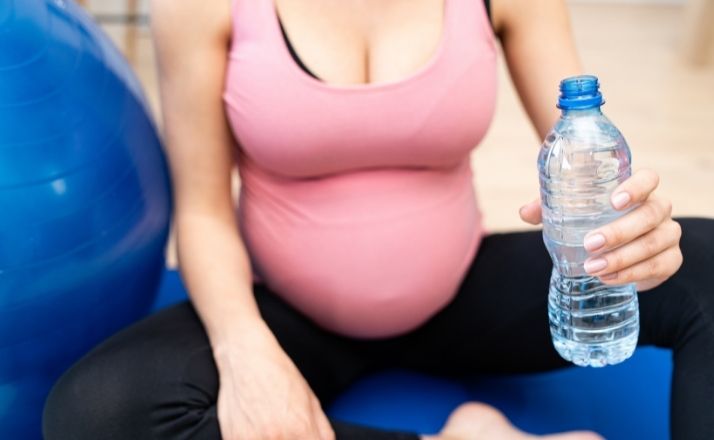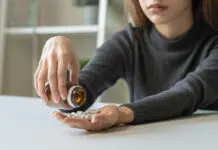At the end of 2021 a new study in Italy found, for the first time, evidence of microplastics in the placentas of six unborn babies. The microplastics were found in the maternal and the fetal membranes — the parts that connect to the mom and to the baby.
You’ve probably heard we’re finding microplastics in our lakes and oceans, but did you know they’re found in our bodies?
Microplastics are small plastic particles that are less than 5 millimeters long. The National Ocean Service says they come from larger plastic debris that have degraded into tiny pieces and end up in our water supply.
We’re also finding microplastics in the food we eat and even the health and beauty products we put on our skin. From toothpastes to face wash, some products use manufactured polyethylene plastic which can be absorbed through our skin.
The Italian researchers from this new study said the evidence of microplastics in unborn babies’ placentas is “a matter of great concern.” But they also admitted we need further studies to see if microplastics can disrupt the developing baby’s immune system or release toxic contaminants.
We don’t know about the long-term effects of microplastics on our bodies, but some laboratory research on microplastics found that it does damage human cells. And, we do have proof that microplastics damage the environment.

So how can we reduce our kids’ exposure to microplastics?
There’s a lot we still don’t know about microplastics. Instead of panicking, let’s choose to focus on what we do know and what we can control.
As parents, it’s our responsibility to educate our kids and help them create healthy sustainable habits. We do this for the health and well-being of our kids, our family, the environment, and the world.
Kelly Leveque, celebrity nutritionist and wellness coach, gave some quick tips on her Instagram (@bewellbykelly) to reduce microplastics in kids’ food and drink:
Use stainless steel water bottles
Avoid disposable plastic water bottles or plastic reusable bottles — yes, even if they say “BPA free.” It’s time to invest in stainless steel like a Yeti or a Hydro Flask. Even if plastic is cheaper, don’t use it. Invest in long-term health.
It’s important to note that not everyone has access to clean water and that’s awful. We can promote sustainable, healthy water storage options AND still work together to provide clean water solutions for everyone.
Try using glass baby bottles vs. plastic bottles
A study from October 2020 shows that babies fed with plastic milk bottles are swallowing millions of plastic particles a day. Researchers say the plastic sheds particles when we sterilize and heat our bottles.
To mitigate this, we can simply heat up our breastmilk or formula in a different container than the bottle, (like glass or stainless steel), cool it, then transfer it to your plastic milk bottle. Or you can switch completely to a glass, silicone or other non-plastic baby bottle.
If you’re looking for some highly-rated glass baby bottles, check out Dr. Brown’s bottles. For silicone bottles, look at the Comotomo bottles.
Switch to silicone, bamboo, or stainless steel plates and snack boxes
There’s a plethora of multicolored plastic plates and snack trays for kids that seem fun, but they aren’t harmless. You can swap the plastic for bamboo plates or stainless steel bento boxes for your kids. Don’t worry, they’re just as easy to clean and still come in fun colors.
Skip the plastic wrap and Ziploc baggies
Cleaning up food should be as easy as possible — especially with kids. Instead of wrapping leftovers in plastic wrap or throwing them in a Ziploc bag, try Stashers reusable bags instead. They’re just as easy to use, but better for your health and the environment.
Buy silicone breast milk bags
A 2019 survey found that 95% of breastfeeding moms pump. It’s a lot of work and requires a lot of supplies for milk storage. But, most storage bags for breastmilk are plastic. Try buying reusable silicone milk bags or a freezer-safe, silicone milk tray.
Yes, it can feel overwhelming. . .
It seems like microplastics are everywhere and in everything. If you’re overwhelmed and don’t know where to start, just start with one change like what container you and your child are using for drinks. These changes may feel inconsequential, but they do add up, and over time they will make a difference.











